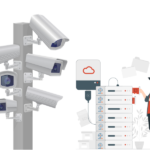Open-source intelligence (OSINT) is the practice of collecting and analyzing information from publicly available sources to gain insights and understanding. These sources can include websites, social media, news articles, public records, and more. OSINT is used by individuals, organizations, and governments to gather information about various subjects, such as security threats, competitors, and trends. It involves careful sourcing, verification, and analysis to provide valuable and actionable intelligence for decision-making and staying informed about developments in a wide range of fields.
Sharing security updates and news from open-source intelligence (OSINT) can be important for keeping others informed and safe. However, it’s crucial to handle this information responsibly to avoid spreading rumour misinformation, disinformation or causing unnecessary panic. Here are some tips to consider before sharing security updates and news from OSINT:
Verify Sources: Ensure that the sources of the information are reputable and reliable. Cross-reference the information with multiple trusted sources to confirm its accuracy before sharing.
Check Credibility: Look for indications that the source is credible, such as the author’s credentials, the publication’s history of accuracy, and whether the information aligns with existing knowledge.
Check Timestamps: Pay attention to the timestamps of the news or updates. Ensure that you are sharing current information and not outdated content.
Consider the Context: Understand the context of the information before sharing. Is the news relevant to a specific industry, region, or group of people? Consider the potential impact of the information on your intended audience.
Provide Attribution: When sharing information, provide proper attribution to the original source. This helps maintain transparency and credibility.
Use Caution with Unverified Information: If you come across information that has not been confirmed by reputable sources, exercise caution. Avoid sharing unverified information that could potentially cause unnecessary panic.
Analyze the Content: Carefully analyze the content to determine if it is well-written and professionally presented. Poorly written or overly sensational content may indicate a lack of credibility.
Avoid Speculation: Stick to the facts and avoid speculation or assumptions. Share only the information that is confirmed and supported by evidence.
Avoid Alarmism: While security updates are important, avoid using alarming language that could create unnecessary fear. Present the information objectively and clearly.
Fact-Check Before Sharing: Even if you trust a source, it’s a good practice to verify the information from multiple sources before sharing, especially if the news is significant.
Offer Actionable Advice: If the information includes actionable steps to protect oneself or mitigate risks, be sure to share those as well. Practical advice can be more valuable to your audience.
Consider the Audience: Think about who will be receiving the information. Tailor your communication to their level of technical expertise and understanding.
Use Official Channels: Whenever possible, share security updates and news from official sources, such as government agencies, security organizations, and reputable technology companies. These sources are more likely to provide accurate and up-to-date information.
Be Mindful of Privacy: Avoid sharing personal or sensitive information about individuals unless it’s absolutely necessary for public safety reasons.
Engage in Constructive Discussions: If you’re sharing the information in a public forum or social media, be prepared to engage in constructive discussions and provide additional context if necessary.
Provide Context and Analysis: Instead of simply sharing a headline or a link, consider providing a brief summary of the information along with some context or analysis. This can help your audience better understand the significance of the news.
Consider Potential Impact: Before sharing sensitive security information, assess the potential impact it might have on various stakeholders. Consider whether sharing the information could inadvertently aid malicious actors or compromise security.
Use Clear Language: You don’t need to use an eye catchy or attention-seeking wordings like journalists. Communicate the information in clear and concise language. Avoid using technical jargon that might confuse or alienate your audience. Make sure your message is easily understandable by a wide range of readers.
We must remember that sharing security updates and news is a responsible and valuable action, but it comes with the responsibility of ensuring accuracy and minimizing unnecessary panic.




